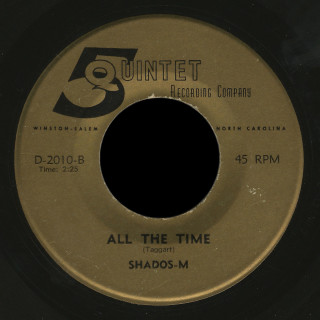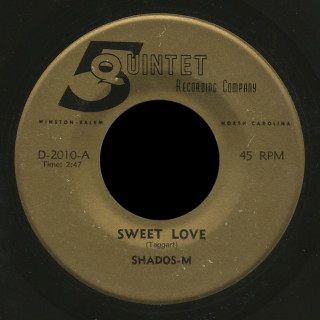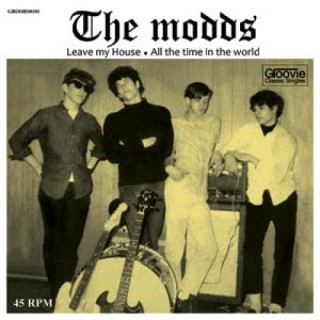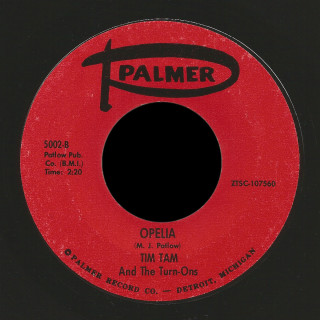Imbued with a combination of influences, several of us started a garage band in New Ulm, Minnesota in 1970 called, “Honey Buzzard.” The memories below are my own and I won’t doubt if others in the group saw it a bit differently, but as I remember it, it came about like this….
We were young teenagers and were really getting into music, listening to WDGY from Minneapolis, WWLS from Chicago and, if the weather was right, KOMA from Oklahoma City. This, combined with buying (and I’m sad to say, shoplifting) 45s and LPs, got us to the point where we wanted to start our own band instead of just listening to others play music.
Around 1967, just blocks from my house were the Kitzberger brothers practicing in their parents’ garage. They went on to be the “Fabulous Depressions” and played in some bigger regional areas and even recorded a song or two. Hearing songs like “Good Lovin’” by the Young Rascals still puts me immediately back to that formative time period.
Across the street, the Ginkel cousins, (Tom and John) were also playing as “The Shags” and they, too, recorded and went on to regional fame. (As proof of their skill, Tom Ginkel was inducted into the Minnesota Music Hall of Fame in 2008!) Us young kids would sit on the sidewalks and driveways by their parents’ garages where they practiced and marvel at how cool it would be to play in a band someday.
In 1969, my classmate and old buddy, Jim Christiansen, bought a guitar (an Epiphone, I think), his younger brother, Rick got an old hollow-body Gretsch bass and we dinked around in Christiansen’s basement for awhile on just these two instruments, knowing that this was a step in the right direction, but we needed more instrumentation if we were to move on. Soon after, I bought a set of Tempro drums accompanied by decent Zildjian cymbals to make up for the moderate drum set’s quality. Brian Wilfahrt was a schoolmate of ours and he had a guitar from his older brother and so we started playing in Christiansen’s basement and Wilfahrt’s garage. Still, we were lacking musically and -a big negative- no one wanted to sing.
The whole band took a big leap forward when we brought in our classmate, Duane Suess. His parents were professional musicians (Minnesota Music Hall of Famers, “Ervin Suess and the Hoolerie Dutchmen”) who, while they didn’t play our style of music, had lots of cool equipment that we could use. With an Ampeg bass amp, decent speakers, Shure microphones and P.A., mic stands, plenty of cords and even a Fender Rhodes and Wurlitzer electric pianos, made us one of the best outfitted young bands around. This equipment complimented Duane’s sunburst Les Paul guitar which he could play decently along with the pianos and -praise the Lord- he could sing! Brian, who was never fully into the band, dropped out at this point.
Practices still happened at Christiansen’s basement, but now moved to my parents’ garage and out to Suess’ farm, too. By now neighboring drummer, Randy Domeier, put together a band that was pretty good. Another neighbor, Dave Schaefer, also had a band going in his parents’ garage, so there was an informal competition to get better that we responded to.
With Duane’s lead, we started with some simple country and basic rock songs, all with Duane on vocal. We may not have wanted to play Charlie Pride or Charlie Rich songs, but Duane knew the chords and lyrics from playing with his folks. Besides, it was cool to actually learn a song from start to finish no matter what we were playing. All of us were excited and practiced diligently on our own. I recall that practices were often led by Duane or Rick and we took the practice time serious, knowing that the parents and neighbors didn’t want to hear us play any longer than necessary. (I only say this because I have heard bands practice for hours, wasting time with their own little solo parts with no direction to the practice.)
I clearly recall the band’s name origin. I was reading the book “Planet of the Apes” and as I was always taught by our nuns at Holy Trinity Grade School, that when you don’t know a word, look it up, don’t gloss over it. With that in mind, I came across the word “pern” in the book. When I got my Webster’s Dictionary out and looked it up, the word was described as “a honey buzzard – a South American vulture.” I sat up in bed and said to myself, “That’s it, this is the band’s name – Honey Buzzard!” When I presented it to the guys at the next practice, they were a little dubious, but Rick grabbed on to it with me and the other guys soon agreed that that’s what we would be called.
The young neighborhood kids and our friends watching us practice gave us confidence to play publicly. With a growing repertoire of Chuck Berry, Rolling Stones and Creedence Clearwater songs, we felt it was time to play in public. Our first gig consisted of a “Battle of the Bands” at our high school, Cathedral High in New Ulm, where we were “killed” by the unlikely-named band, “Bad.” It was Randy Domeier on drums – who was way better than me; Scott Sparlin on guitar who was better than Jim and Duane and more spirited in both his singing and showmanship; and Pat “Schnubby” Schnobrich on bass, who was better than Rick, but not by much – because by now, Rick was getting good! Rick remembers spilling punch on the Ampeg amp and frying it during the show. He had to humble himself and use “Bad’s” amp – which we were sure contributed to our losing the “battle” –haha. Since it was out first public show, we were nervous at this gig, as could be expected. However it was a great way to get good – jump in the fire and play against someone better than you.
We were motivated by our growing skills and gained confidence to play in public again. We played at a few more school dances and some teen dances in the area, and even a bar in nearby Essig called “The Wagon Wheel West,” where we were asked to leave due to a wilder and louder-than-expected song set.
We kept learning new songs including some Alice Cooper, Grand Funk Railroad, Neil Young and Badfinger. One of our biggest gigs was for the Girls State Gymnastic Tournament in New Ulm at historic Turner Hall. That’s where the only known photo of us was taken. Sadly, here too we were asked to leave for being too loud, but we did hook-up with a few of the girls afterward! Legend has it that there is a reel-to-reel recording of this somewhere that I’d love to hear, but no one seems to know where it is.
By now (1972) all of the band members were progressing in their skill at a quicker rate than I was and to my surprise, embarrassment and (at the time) anger, the guys invited Brad Anderson to bring in his drums to one of our practices. They politely said they wanted to try two drummers, a la’ The Allman Brothers Band. I had heard Brad play before and knew he was outstanding and so, seeing the handwriting on the wall, I packed up my things and left that afternoon in a huff. (Brad went on to be a professional drummer for many, many years!) After a short period of cooling off, I let the guys know that I was not mad about the change and wished them well with their new formation. Besides, I knew that it was my own fault for failing to keep up talent-wise.
With that new line-up, the guys changed their name to “Thunderhead” and hung on for a half year until after high school when they disbanded in mid-1973. So ended the short, but exciting time of a group of friends having fun with music, known as, “Honey Buzzard.”
Aftermath:
Playing in the band left a life-long memory with me. It was a cool thing to do, it taught me to appreciate the whole process of practicing, playing in public and the dynamics of a band’s make-up. I am super proud to have been in a garage band!
Shortly after being out of the band, I soon sold my drums as I had no use for them and needed money for a new stereo. However, after a 20-year hiatus, I bought an old set from Jim again around 1992 which I still have and occasionally play. The biggest legacy from that experience for me is that my son, Steve, started playing around the age of 4. He has progressed to being an excellent drummer doing things that I don’t even know how he does. With his brother, Sam on bass, my sons have played in rock bands for five years now and are quite good. Sam is teaching himself guitar and sings in choir and is considering music as a career in some fashion. I think parents are naturally glad to see their children exceed their skill levels. I know I am.
Jim dinked around with bands in college (“Tommy Nuke and the Flash”), but let it go for several years. However, about 1995 he began taking guitar seriously, including taking lessons from a pro, and has reunited with his brother, Rick, in “Van Gogh’s Ear” – a classic rock bar band for the last four years. Music has been a big part of his life and he has taken to bringing his oldest son to classic rock concerts with him to share the music and the experience.
Rick continued his musicianship and can play guitar and sing, along with still playing bass. He is active in his church’s music program, but can play anywhere, with anyone, including a folk band called, “The Salty Dogs.” Rick is a very good musician with a wide array of talents.
As far as we know, Duane has drifted away from music, ending up in the Des Moines area, although he played on several of his parents’ recordings and live shows. I hope he does something with music, since he definitely has the talent for it.
Terry Sveine
New Ulm, MN
 This 45 has great atmosphere and unusual production. It’s the work of several talented people who were usually involved in much more commercial music.
This 45 has great atmosphere and unusual production. It’s the work of several talented people who were usually involved in much more commercial music.















 The Modds 45 is notorious for the unbelievably crude sound of “Leave My House”.
The Modds 45 is notorious for the unbelievably crude sound of “Leave My House”. Mop Top Mike sent in the songs and label scans, and provided more detail about publishing and label info:
Mop Top Mike sent in the songs and label scans, and provided more detail about publishing and label info:





































 “Save Me” is a slow and intense psychedelic 45 featuring the anguished vocal of Richy Pecchio over the Brotherhood of Soul’s repetitive vamp. The flip is a shorter instrumental version of “Save Me”, retitled “The Morning After” with the bass guitar right up at the edge of the red on the meters.
“Save Me” is a slow and intense psychedelic 45 featuring the anguished vocal of Richy Pecchio over the Brotherhood of Soul’s repetitive vamp. The flip is a shorter instrumental version of “Save Me”, retitled “The Morning After” with the bass guitar right up at the edge of the red on the meters. He also signed Nate Bouknight, also known as “Little Nat” from the Shells. Their hit song was “Baby Oh Baby” (late 50’s fame). Nate wrote a real good song called “Do This Do That,” that made some noise. Certainly I learned a lot from him.
He also signed Nate Bouknight, also known as “Little Nat” from the Shells. Their hit song was “Baby Oh Baby” (late 50’s fame). Nate wrote a real good song called “Do This Do That,” that made some noise. Certainly I learned a lot from him.